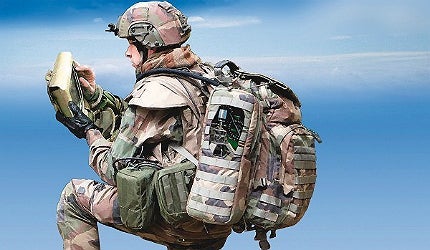

Berenice Baker: Can you give me some background about what ONERA does and how it is structured?
Jean-Paul Bruyant: ONERA is very similar to the Defence Science and Technology Laboratory (DSTL) in the UK. It is a research lab related to the Ministry of Defence which works in two domains – aeronautics and defence. Our budget is around EUR240 million a year, and we employ 2,000 people, mainly scientists, including 200 PhD professors.
We are organised in four scientific branches: fluid mechanics and energetics, materials and structures, physics, and information processing and systems.
Within fluid dynamics and energetics, we have developed ANSI-compatible hypothetical software called LSA for designing aircraft and aerodynamics. It is used by more than 1,000 engineers at Airbus and by Dassault Aviation for military aircraft and business jets, such as the Falcon. We also have a set of tools called CEDRE, a code to optimise engine combustion, used by Snecma Safran’s engines group.
Materials and structures is a cross-disciplinary department with two main domains. In aerostructure we look at composite materials and monitor them through imaging and at the microstructure level. We also look at metallic parts for engines and turbo props, including a very sophisticated system for controlling the heating and cooling within turbines.

US Tariffs are shifting - will you react or anticipate?
Don’t let policy changes catch you off guard. Stay proactive with real-time data and expert analysis.
By GlobalDataIn the physics department, we look at new materials for optics and instrumentation. We’re looking at using materials such as quartz in navigation systems, accelerometers and geometers. It’s a pure material that is interesting because you can integrate electronics with it.
Information processing and systems deals with information processing of data collected from sensors such as radar and optical systems. We study command and control systems for UAVs to give them autonomy, such as being able to calculate a new flight path if there are obstacles on the landing surface. The department also carried out missile research, for which we have partnerships with MDBA, Thales, Sagem and Snecma in France, and across the main industry operators in northern Europe.
BB: Is ONERA looking to develop more international relations?
J-PB: Expanding international relations is one of the two main objectives for ONERA. For example, we are developing a relationship with Singapore in various electronic domains, we are trying to build an operational relationship with Brazil, and we are working to build a partnership with India.
My objective for this year is to build a relationship with the UK. The problem is there is no British equivalent organisation to ONERA, so we plan to meet with the British Ministry of Defence to explore ways to develop links. We used to work with the DSTL and QinetiQ in the past, but now we have fewer common interests.
The second objective is to transfer technology to industry, whether major manufacturers or SMEs. For example we transferred costal surveillance radar technology to Thales which they are using to plot the path of boats in the Bay of Biscay. We also transferred our OPO laser gas detection technology, developed initially for the French MoD, to SMEs.
BB: How closely is ONERA related to the French MoD?
J-PB: ONERA is a government organisation but not part of the Ministry of Defence.
We receive a grant from the MoD to prepare future technologies that are too risky for industry, for example, our Decawatt microturbine which can produce 100W of energy in a volume of less than 10cc to power dismounted soldier systems and UAVs. We also get grants from our industrial aerospace partners and we are looking more towards international technology transfer opportunities.
Another idea is that all the studies led by ONERA could be useful for someone. In the past, we have had many reports stuck on the shelf, but the idea now is that we could share them with defence and civilian companies around the world. In the past, all the work we carried out for the DGA, the French defence procurement agency, or the French MoD had to remain secret. Now the world has changed, the DGA has changed and ONERA must too.
ONERA is funded through 40% government funding and 60% contracts, but the budget is split between defence and aerospace, which reflects the fact that the projects we carry out are cross both domains. We want to break the barriers between these domains and are looking to develop new partnerships in the military sector, where there are more SME operators than aerospace, which is dominated by major players such as Dassault, Thales and Airbus.
BB: What other research have you been carrying out for the air force?
J-PB: We have high-tech wind tunnels and perform lots of studies on aeronautics for the design of aircraft, UAVs and missiles, and the separation phase for bomb bays.
We also research aircraft sensors, and ONERA is a key partner for Thales’ Reco NG optronics reconnaissance pod used extensively during the recent Libya operations, and we have a number of activities in radar imagery for UAVs.
In one project, we are studying an anemometer system to compliment the pitot tube to measure air speed in helicopters, which can go so slowly that standard systems cannot give an accurate measurement.
We were involved in developing the latest generation of blade for the Eurocopter, called Développement Technique Probatoire Rotor à Pale Active (DTP RPA), or Active Blade Concept, which uses scythe-like active flaps on the trailing blade to decrease vibrations. The idea is to reduce noise, consumption and pollution for the civilian market, though this is not the first priority for military systems.
Our long-term vision is to adapt more civilian technology for military use. For example, simulators are increasingly led by the games industry, the military is no longer the leader in the field.


